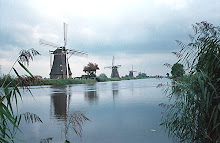This week the UNESCO-agency of the United Nations is inviting us to make a trip to explore the extraordinary roman remains in Palmyra, an oasis in the Syrian desert, north-east of Damascus in Syria.
Palmyra, in Arabic Tadmor, was in ancient times an important city of central Syria, located in an oasis 215 km northeast of Damascus and 120 km southwest of the Euphrates river.
The city contains the monumental ruins of a great city that was one of the most important cultural centres of the ancient world.
From the 1st to the 2nd century, the art and architecture of Palmyra, standing at the crossroads of several civilizations, married Graeco-Roman techniques with local traditions and Persian influences.
Next to this, it has long been a vital caravan city for travellers crossing the Syrian desert and was known as the Bride of the Desert.
The earliest documented reference to the city by its pre-Semitic name Tadmor, Tadmur or Tudmur, is recorded in Babylonian tablets found in Mari.
Though the ancient site fell into disuse after the 16th century, it is still known as Tadmor in Arabic, and there is a small newer settlement next to the ruins of the same name.
The Palmyrenes constructed a series of large-scale monuments such as limestone slabs with human busts representing the deceased.
An oasis in the Syrian desert, north-east of Damascus, Palmyra contains the monumental ruins of a great city that was one of the most important cultural centres of the ancient world.
http://www.WHTour.org/23
skip to main |
skip to sidebar
.jpg)
The Mills in Kinderdijk, province Zuid-Holland, Netherlands
.jpg)
The Mills in Kinderdijk, province Zuid-Holland, Netherlands